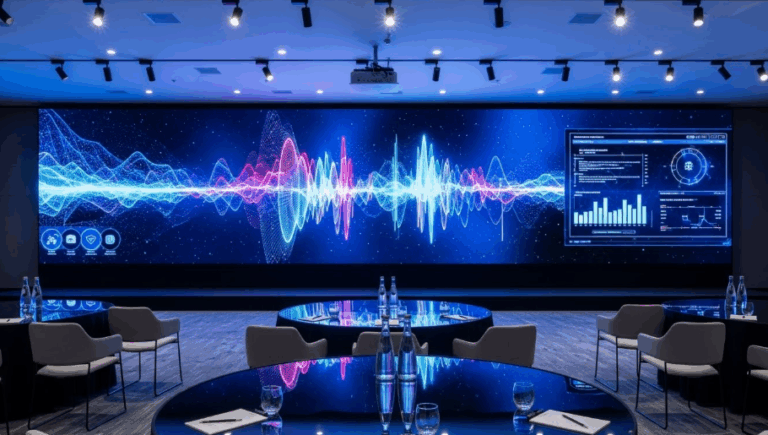With the development of market economy, the application range of LED display will continue to expand. LED display as an information dissemination tool, has been widely used in various industries. LED large screen display as an external visual media of the computer, with powerful real-time dynamic data display and graphic display functions.
However, some people do not understand the difference between outdoor LED display and indoor LED display. Indoor LED display and outdoor LED display have some significant differences, mainly including the following aspects:

1. Brightness and visibility
Outdoor LED displays need to have higher brightness to cope with strong light exposure such as direct sunlight. The brightness of the indoor LED display is low, because the indoor environment is usually relatively dark, and high brightness will cause visual fatigue.
2. Display size
Indoor LED display size is generally smaller than outdoor, common P2.5, P3, P4, P5; The outdoor LED display size is larger than the indoor, common P8, P10, P12 and so on.
3. Different resolution
Indoor LED display generally higher resolution, common 1920×1080, 3840×2160 and so on; The outdoor LED display resolution is low, the common 1024×768, 1280×1024 and so on.
4. Control mode
Indoor LED display generally adopts wired control mode, such as interface control, network control, etc. Outdoor LED display generally uses wireless control methods, such as WiFi, 3G, 4G, 5G and so on. About LED display synchronous control and asynchronous control.
5, suitable for observing different distances
6. Protection level
Outdoor LED displays need to have a high level of protection to withstand wind, rain, dust and other adverse weather conditions. Common outdoor LED displays have IP65 or higher protection levels. The indoor LED display does not need such a high level of protection, generally IP20 or lower.
7, pixel spacing
Outdoor LED display pixel spacing is usually large, because the outdoor viewing distance is far, higher resolution is not the main concern. The pixel spacing of indoor LED displays is usually small to ensure the clarity of the image when viewed at close range.

8. Transparency
Outdoor LED displays usually do not require transparency, while the transparency of indoor LED displays may become part of the design requirements, such as for glass curtain walls or special display places.
9. Energy consumption and heat dissipation
Because the outdoor LED display needs to have higher brightness and stronger environmental adaptability, its energy consumption and heat dissipation problems need to be paid more attention. The energy consumption and heat dissipation of indoor LED displays are relatively low.
10,Installation mode
Under normal circumstances, when installed outdoors, LED display is used more with wall hanging, columns, brackets, etc., usually after maintenance, do not consider the limitations of installation space, and used in the indoor LED display need to consider the installation environment, the load-bearing capacity of the wall, etc., multi-purpose maintenance design, as far as possible to save installation space.
11, display function
Outdoor LED display is mainly used for advertising, mostly to play advertising videos, videos, text content. In addition to advertising, the indoor LED display is also used in big data display, conference, exhibition and other occasions, and the display content is more extensive.
12. Price
Outdoor LED displays are usually more expensive than indoor LED displays, mainly because outdoor displays need to have higher technical indicators and protective performance. Do you know the price of outdoor led display?
The above difference between indoor LED display and outdoor LED display is shared here for everyone, and indoor LED display is usually hung on the wall, and some will maintain a certain distance from the wall, such as the stage background LED display will leave a safe passage behind the stage, special scenes will be hoisted. For example, the center of the stadium or the central indoor LED display in a large shopping mall will take the way of lifting, and a variety of installation methods have special requirements for protection and maintenance.





